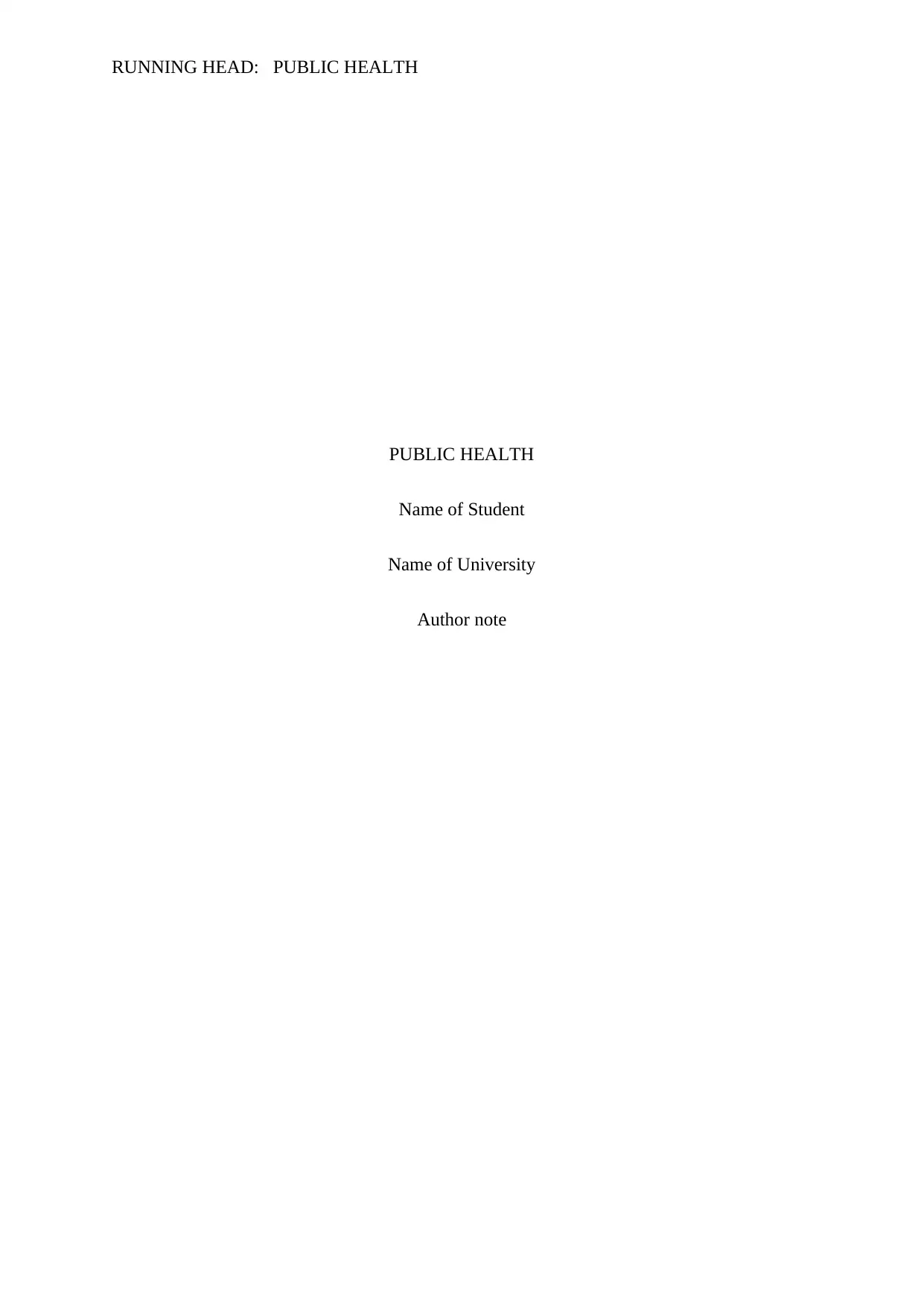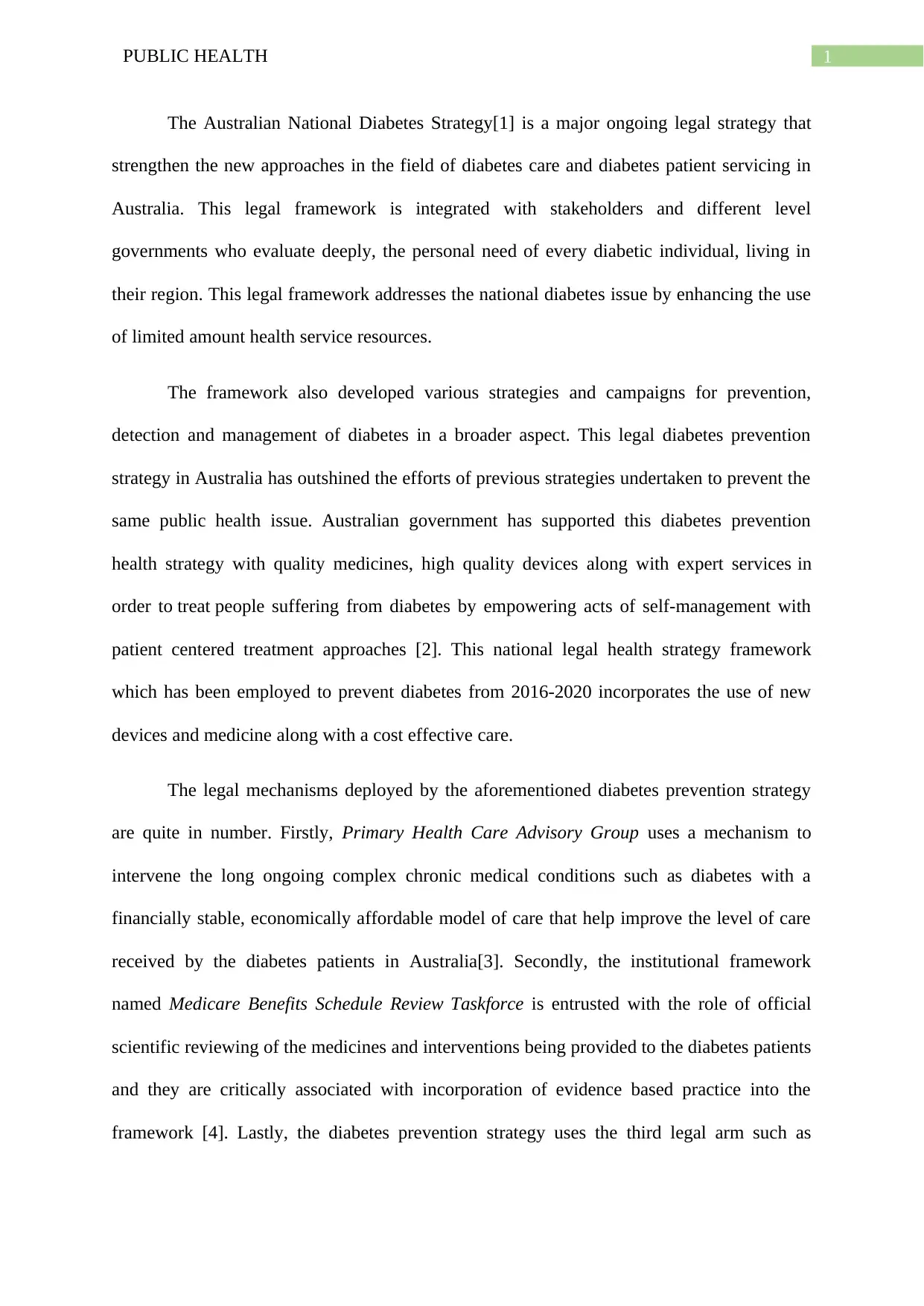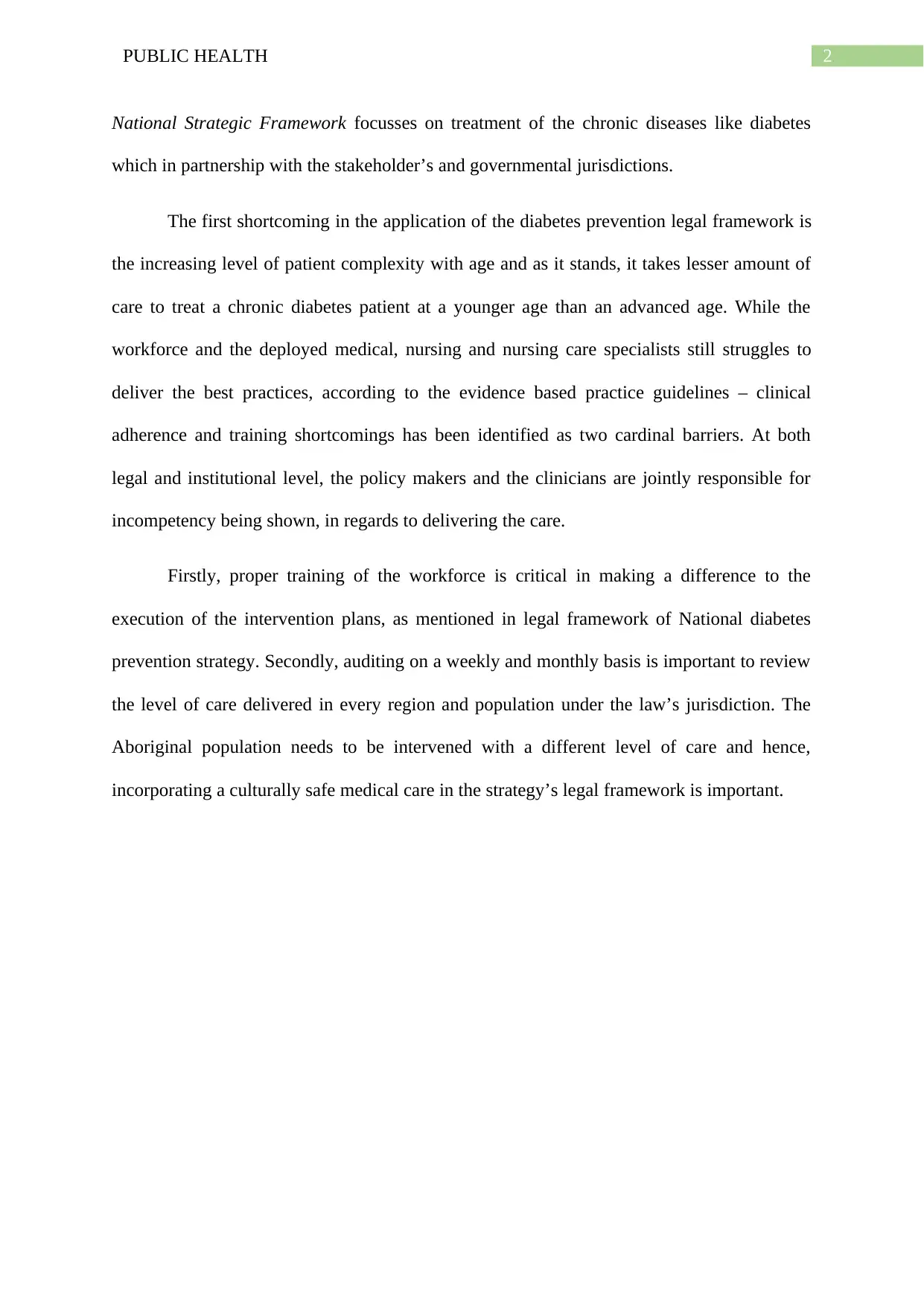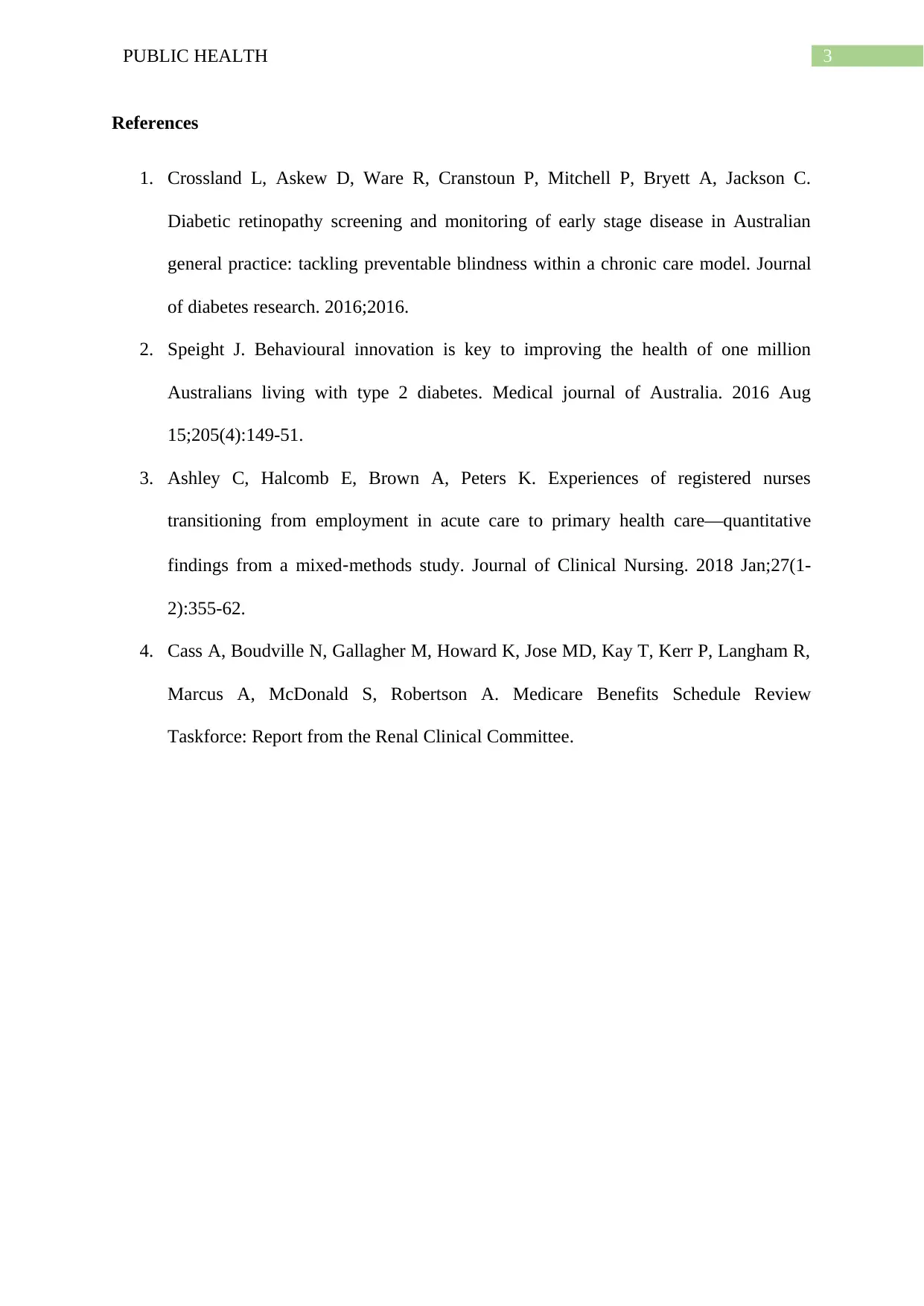Analysis of the Australian National Diabetes Strategy - HSYP804
VerifiedAdded on 2022/09/18
|4
|756
|24
Report
AI Summary
This report analyzes the Australian National Diabetes Strategy, a major legal framework aimed at improving diabetes care and patient services in Australia. The strategy, supported by the government, focuses on prevention, detection, and management of diabetes, utilizing various legal mechanisms such as the Primary Health Care Advisory Group, the Medicare Benefits Schedule Review Taskforce, and the National Strategic Framework. The report highlights the strategy's strengths, including the use of new devices and cost-effective care, but also identifies shortcomings such as the increasing complexity of patient care with age and workforce training deficiencies. The analysis emphasizes the importance of addressing these issues through workforce training, regular auditing, and culturally safe medical care, especially for the Aboriginal population. The report references key studies and provides a comprehensive overview of the strategy's impact and areas for improvement.
1 out of 4











![[object Object]](/_next/static/media/star-bottom.7253800d.svg)